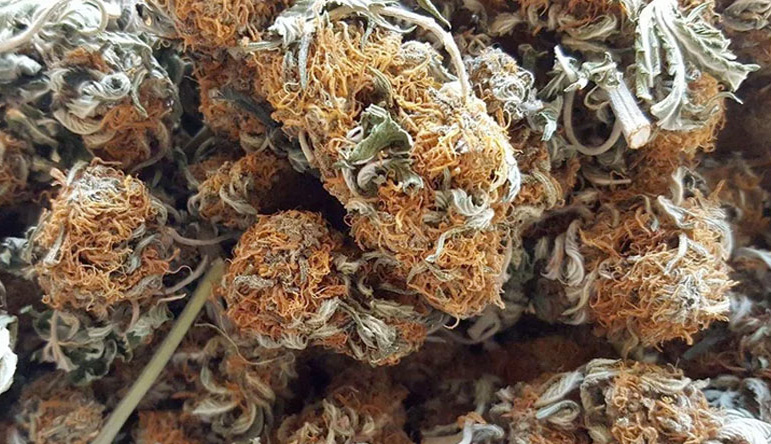PGR cannabis: what is a plant growth regulator?

If you’ve grown your own cannabis, you’ll know there are many ways to influence the way the plants grow as well as the quality of the flowers and the cannabinoids they develop.
In all plants, even some of the fruit we eat, plant growth regulators (PGR) can significantly increase the weight, and therefore worth, of a harvest. Unfortunately, it does not ensure quality.
The use of these chemicals in both legal and illegal cannabis crops is difficult to regulate. Which poses potential health risks to unknowing cannabis users.
Truth be told, the majority of Australians still rely on illegal and unregulated cannabis - whether for medical or recreational purposes. It’s important to familiarise yourself with the signs, and effects, of PGR marijuana.
What are PGRs?
Plant growth regulators are synthesised chemicals that mimic the natural hormones of plants. Commonly used for growing fruit, these can produce favourable characteristics by triggering a specific physiological response.
PGR chemicals are often used in food, although in regulated low concentrations. These results are more attractive traits to the consumer: in cannabis terms, this means large, dense-looking flowering heads.
Although there are natural alternatives, the synthesised versions produce greater results and are the obvious choice for growers looking for quick and weighty harvests.
Often compared to steroids for plants, acting PGRs are classified according to the broader functions:
Plant Growth Promoters - these promote growth through cell division as well as boost flowering and fruit-production. In cannabis, they’re used to boost root growth, number of branches, and obviously, larger flowers.
Plant Growth Retardants - these promote dormancy and abscission (the natural loss of ripe fruit and dead leaves). These PGRs help indoor growers keep their plants small, directing energy to producing larger and denser flowers.
Plant growth regulators in cannabis
PGRs affect the growth of cannabis flowers. In high enough concentrations these will leave traces present in the buds which eventually will be cured and smoked.
Combustion transforms them into actively toxic chemicals that are dangerous in unregulated concentrations. Some of the most commonly used PGRs in Australia are:
Paclobutrazol (PBZ)
Daminozide
Chlormequat Chloride
All three PGRs are plant growth retardants in which they increase the density of the cannabis flowers by slowing down the growth in other areas of the plant. For example, the growth of stems and leaves may be hindered when using PGRs in order to direct more energy for the buds. One big downside of using PGR for cannabis is the production of natural terpenes and cannabinoids like CBD and THC is significantly reduced, therefore producing a less potent final product.
"One big downside of using PGR for cannabis is the production of natural terpenes and cannabinoids like CBD and THC is significantly reduced"
Out of the three, Paclobutrazol or PBZ, is the most prevalent in Australia’s underground cannabis market. PBZ in cannabis is used to increase the weight and density of cannabis flowers, and largely responsible for the dense, thick buds covered in red-orange pistils - often lacking any visible glistening trichomes.
Are Synthetic PGRs dangerous?
Apart from producing lower quality cannabis flowers, synthetic PRGs are known to contain toxic chemicals which are dangerous for human consumption.
In the 1980s, the United States Environmental Protection Agency (EPA) classified Daminozide as a “probable human carcinogen”. Due to the potential to cause cancer in high doses, Daminozide was banned for food use in 1989, leading to several recalls in the agricultural industry.
The EPA also raised similar concerns for Paclobutrazol. When combusted, PBZ is chemically transformed into molecules called nitrosamines. Found in cigarettes, these are not only identified carcinogens, but they’re also associated with liver damage and male infertility.
Has Australia banned plant growth regulators?
PGRs such as Paclobutrazol, Daminozide and Chlormequat Chloride (CC) are not banned by the Australian government. However, manufacturers of products that include these and other chemicals are required to register with the Australian Pesticides Authority.
You can find an inventory of products that make use of these PGRs here. Unfortunately, despite recognisable dangers associated with the ingestion of their byproducts, there is still a lot of research required to understand what amounts are safe for cannabis in particular.
It’s also impossible to regulate the use of plant growth regulators in cannabis in an underground industry. For those who don't have access to lab grown medicinal cannabis, chances are you may have encountered some black market products with at least one of these chemicals involved.
PGR vs no PGR: how to tell the difference
Until recreational cannabis is legalised across the country, quality regulation standards for the industry won't be adequately enforced. Therefore, you can only arm yourself with enough information in order to recognise PGR cannabis so you can ultimately avoid it.
Identifying PGR plants will require a keen cannabis eye and critical nose. You’ll also need to know what to look for in high-quality organic cannabis. You can use these physical markers to help you identify the presence of PGRs in your cannabis.
Visual indicators of PGRs in marijuana
The easiest way to tell if your cannabis was grown using plant growth regulators is by judging its appearance.

The visual traits of any cannabis crops vary depending on the strain and growing conditions. Therefore, it’s not surprising that most PGR buds can pass as another successful indoor harvest.
A few visual indicators of PGR cannabis include:
Dense and boulder-like flowers which can be flattened without bouncing back
Excessive amounts of intense, red-orange reproductive pistils (hairs)
Dull, monotonous colouring without any healthy greens
Lack of trichomes - this is a key indication of a plant’s hormones. Trichomes make up the crystallised frosting which is usually covering cannabis flowers.
While judging the appearance of a cannabis flower is the most obvious way to guess how it may have been grown, there are other factors to consider.
It’s important to note that certain cannabis strains, such as Aurora Indica and other indica strains tend to naturally produce dense buds with generous amounts of pistils and terpenes. There are also many cannabis strains with naturally occurring orange pistils.
Scent: When it comes to PGR cannabis, you’ll notice the smell lacks depth and flavour layers. Unlike the high-quality and natural alternative, cannabis heads influenced by growth regulators will smell more swampy / earthy and dull, or even have no smell at all.
Smoke: Due to the lack of terpenes and increased presence of chemicals, the type of smoking experience you get from consuming PGR-laced cannabis can be compared to a lethargic and unmotivated high. This could be in conjunction with over-stimulated body functions resulting in sweating, temperature fluctuations and the presence of headaches.
Final thoughts on cannabis PGRs
Chemicals such as Paclobutrazol are used to increase the weight of cannabis flowers and imply increased quality. Unfortunately, they inhibit the production of beneficial cannabinoids, trichomes and terpenes which will significantly decrease the satisfaction of your session. It will also leave you with some unpleasant side effects, without the added risk of carcinogenic toxins in the worst-case scenario.
PGRs are a profitable short-cut in a largely unregulated industry that dictates price according to weight, and quality according to aesthetics. Without decriminalising recreational cannabis nationally, there’s no way to regulate the amounts of chemicals which eventually end up being consumed by Aussie consumers.
